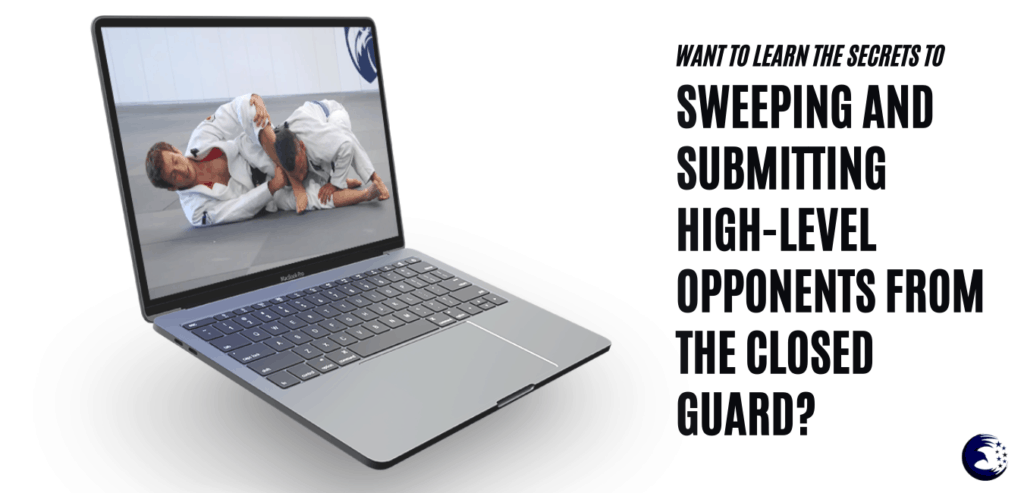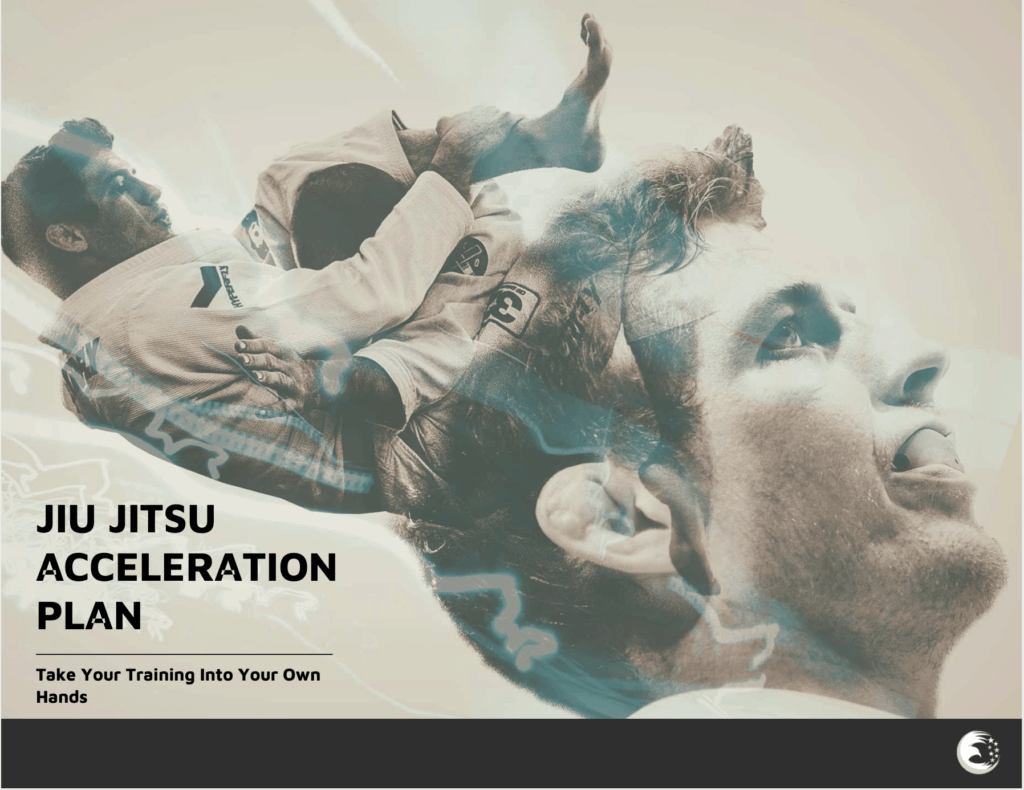
Quick question — Is your jiu jitsu game at the level you want it to be?
Actually, before you answer that, I have an even more important question…
… are you on the path to having the jiu jitsu game you always wished you had?
Are you someone who showed up to class every day, did everything you’re supposed to do, but for some reason, you’re still haunted by weak links in your game?
Your biggest problem could be your guard game, that 300lbs pressure passer in your gym, the blue belt phenom whose guard you struggle to pass, or maybe it’s that you can’t maintain side control to save your life.
Whatever your biggest problem may be, you need to address it – NOW!
If you want to break through those obstacles in your game, you have to know that all the answers you’re looking for won’t miraculously fall into your lap.
What you need — is a game plan for your success…
Why You Need a Game Plan For Your Training
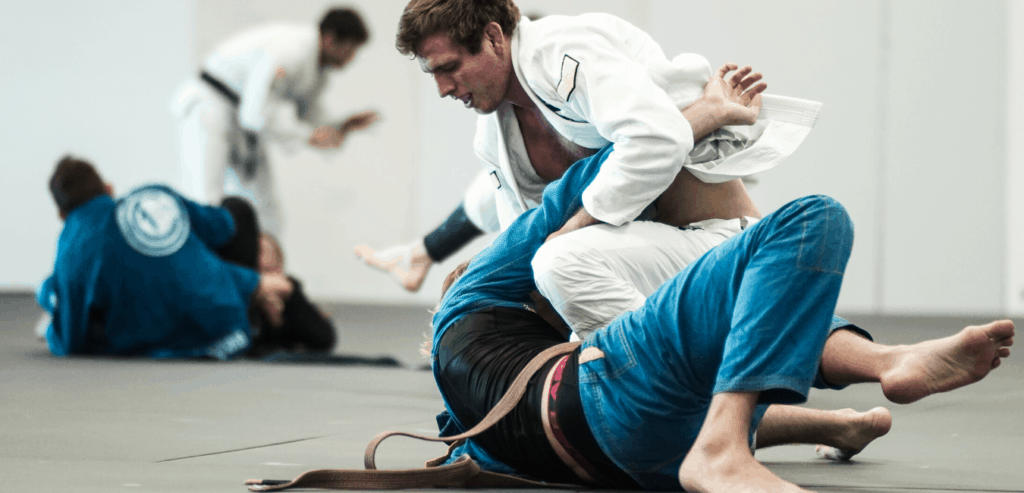
There’s no secret that knowing what you need to do in a roll is important.
And knowing what to do is largely derived from your past experiences on the mat.
However, previous experiences rarely provide lessons and development when those experiences are approached aimlessly.
This is why you need a game plan for your development.
You need a goal, and you need to approach your training with an agenda.
Let me explain this further with an example…
Person A and Person B really love jiu jitsu and can’t wait to step onto the mats each and every day.
However, they both have the same problem in their game right now: they’re both notorious for having weak guards that anyone and their grandmother can pass.
Person A puts all their faith in their instructor thinking, “All I have to learn lies within this one person. If I just show up to class and only do the things they tell me, I surely cannot fail.”
Person B has a lot of faith in their instructor too, however, they know that their instructor has their own style and cannot hope to provide personal guidance to Person B and everyone else in the class equally. Person B knows that in order to solve what is currently their biggest problem on the mat (their terrible guard game) they will have to go the extra mile and take their training into their own hands.
Person A goes through the motions in class. However, for the last few weeks, the instructor has focused solely on side control. Person A decides his faith cannot waiver and continues to dedicate all their energy to side control, hoping that next week they’ll move onto guard retention.
Person B goes through the motion in class too. However, Person B ensures he is also working on his guard in sparring, stays back after class to get advice on guard retention from his coach and the higher belts and drills them with anyone he can. He studies instructional videos from known guard players and works on positional sparring with his friend in his garage.
I won’t tell you who it is that finally breaks free from the reputation of having the gym’s worst guard…
… I’m sure you’ve figured that out yourself.
What we really need to discuss is which person from our example…
… is you?
Will you persist in handing ownership of your development over to someone else?
Or will you do what needs to be done, take your training into your own hands and develop your own game plan for mastering positions and solving your problems in Jiu Jitsu?
Did you choose the latter?
Great, let’s move on…
Where to Start – Selecting a Homebase
Today, we’ll be looking at this idea from the perspective of Johnny.
This is Johnny.
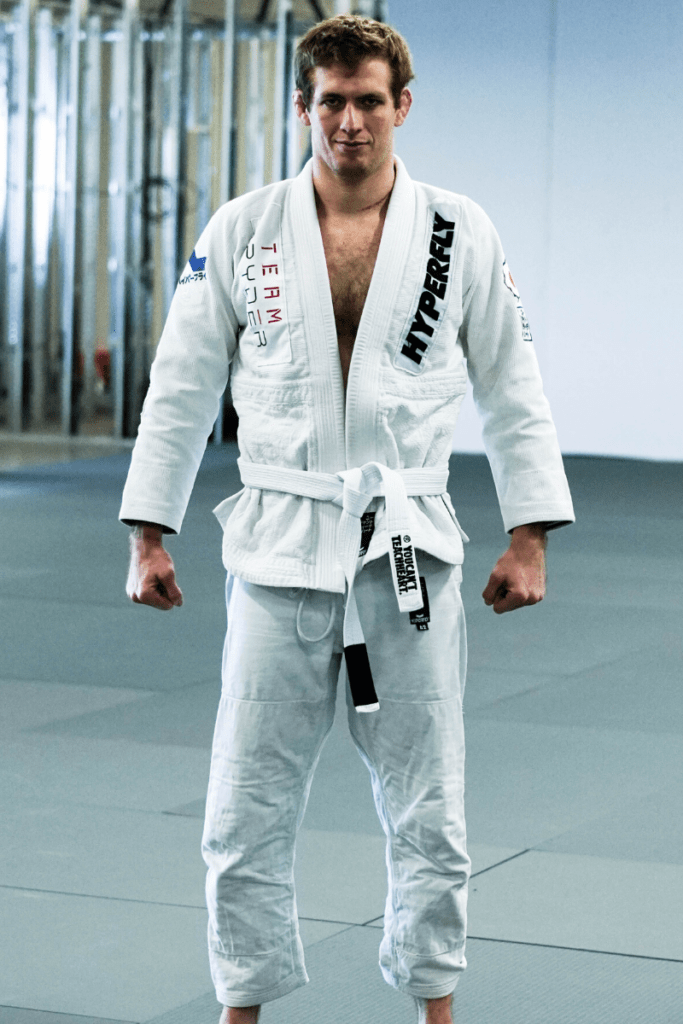
He may look like Keenan Cornelius wearing a white belt, but trust me, this is Johnny.
While Johnny is relatively new to Jiu Jitsu, the big picture ideas we will be helping him with today are universal and their applications have the power to help any and all practitioners, white belt to black.
Back to Johnny…
Johnny has recently found that the closed guard is the most common position he finds himself in class – both attacking and defending.
He finds it difficult to maintain control in most positions, but the few times he has been the attacker from the closed guard he was confident in his ability to restrict his opponent’s movements, compared to other positions.
Furthermore, he was, even happier to find that he could also occasionally sweep or submit some of the other white belts from this position.
While Johnny’s simple selection process above made the closed guard, for him, an obvious choice, finding your own home base mightn’t be so easy.
To help you out, I’ve listed 5 simple questions your ideal home base must satisfy in order to qualify as the best home base for you…
- 1. Is it relevant to the circumstances I face on an average day? Your situation is different to the next person’s. If you find you’re the smallest person in your gym and you’re constantly being put on your back and smashed from side control, devoting your time to a guard as your home base may be wiser than a position you rarely get to during sparring rounds.
- 2. Has the position been validated at a high level? Make sure the position you choose has significant value. Do high-level athletes use it? And, most importantly, do they use it against other high-level athletes in competition? It’s important to distinguish which positions the elite of the sport use in their A-Game and which they use to garner more likes on Instagram: You should never – I repeat, NEVER – sacrifice effectiveness to look cool, In short — don’t reinvent the wheel and don’t fall for Instagram Snake Oil salesmen.
- 3. Will this position provide an adequate level of control over my opponent while I attack them? Attacking a sweep or submission generally involves sacrificing degrees of control as you dedicate an arm or leg to the task or adjust your hip positioning to suit the attack. With this in mind, it is important that you rank the potential home base options available to you based on how much control you’ll be giving up when attacking your opponent. For example, in back mount, you have greater control over your opponent’s body when attacking a choke compared to attacking a choke from the front headlock position. That is, your opponent has a greater opportunity for escape as you transition from the front headlock to a fully locked guillotine or anaconda compared to the opportunity for escape they have when you transition from seat belt control to attacking a rear-naked choke.
- 4. If control is lost, are there opportunities to advance to other positions of dominant control? Worst case scenario, your opponent is able to escape. Will the escape allow them to move into an attacking position, a neutral position or will you maintain dominance?
- 5. Will this position provide multiple options for attack? Your fundamental goal in mapping out your game should be to steer the fight towards positions where the number of match finishing opportunities are relatively greater in number to your other options. For example, from the back, you have the rear-naked choke. But failing that you have the opportunity to also attack with wrist locks, triangles, armbars and more.
It’s a good idea to take your time when working through the selection criteria above.
However, if you find yourself stuck deciding between two or even three positions (assuming all of which have passed each of the 5 questions above with flying colors), well I’m afraid to say that it’s probably best to just pick one and run with it – or as I call it “throwing a dart with your eyes closed”.
I know that kind of sounds reckless, especially after how much consideration you would have put in beforehand. But it’s always better to get the ball rolling and switch it up later if you need to, rather than remain seated on the fence where you fail to start.
How to Train to Develop Your Homebase
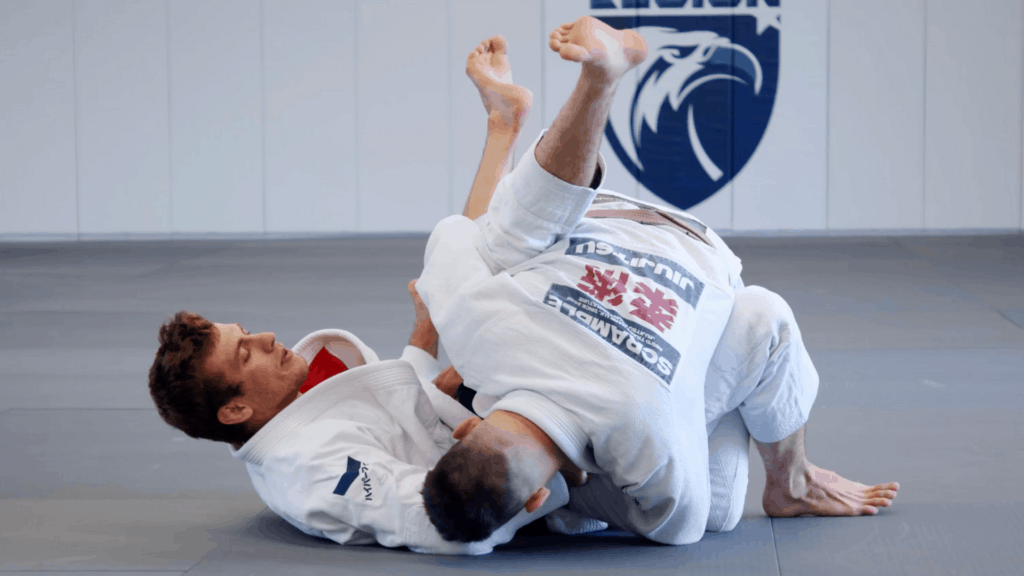
Let’s check in with our man Johnny – you remember Johnny, right?
To help old John-boy develop an effective game plan for his closed guard, we’re going to split his home base up into 3 separate goal cycles.
Goal Cycles
These cycles form the 3 general and fundamental phases of all positions within Jiu Jitsu.
They are:
- Entry to the position
- Controlling the position
- Attacking to either advance position or submit your opponent
At first, it may make sense to work through these 3 cycles in chronological order; however, it is a good practice to begin working on control first, as this will help you gain a better understanding of the position, which will then aid in highlighting any potential nuances that may cross over into the other cycles of entry and attack.
For example, Johnny may spend a number of weeks practicing controlling his training partner from the cl0sed guard.
Doing this, he realizes how important over hooks and grips on the collar are is in the position.
He sees that the over hook allows him to gain control over his opponent’s arm along with some degree of control over their posture while freeing up his other arm to mount an attack.
He has also noticed that with the over hook, his opponent generally has to exert and burn more energy to free their arm and regain posture.
Coming to this realization, Johnny decides that it would be a good idea to try and secure the over hook grip early from the closed guard.
He now has realized an initial goal to achieve in this position.
Had Johnny focused on learning sweeps before learning to control the position, the power of the over hook grip may or may not have been established this early in his development.
For similar reasons, the controlling cycle should also be practiced before moving into the attack cycle.
Understanding how to control the position and more importantly, what needs to happen in order to lose control of a position, is crucial when selecting the most effective and efficient attacks for your game.
Placing too much emphasis on attack over control can lead to many failed attempts, the manifestation of bad habits and even worse, losing the position and losing the match.
Developing the Cycles
When training in cycles, Johnny shouldn’t fight blindly with his training partner with the sole goal of ‘winning”.
This isn’t training, this is ego, and definitely not something that is conducive to his development on the mat.
Training = practice.
The gym = the lab.
Therefore, practicing the cycles mentioned earlier must be based on the following ideas…
My mental efforts on and off the mats should focus on developing theories…
I will then dive deeper and derive hypotheses from these theories…
My physical efforts in practice will be dedicated to proving these hypotheses wrong.
Ok, so, there’s a bit to unpack here, and I bet that last line kind of makes you think “WTF, prove them wrong? Why would I want to prove the ideas I come up with to be wrong.
Don’t worry, all will be explained.
First, let’s look at the difference between a theory and a hypothesis and how they relate to Johnny’s development from the back.
The Theory – a statement summarizing the relationship between a selection of objects or events:
Johnny: “When I get to closed guard, I will sweep my opponent within 60 seconds.”
Not all theories can be considered equal, and therefore they must satisfy the following 3 criteria to be considered “good”.
- The theory must be the simplest explanation possible.
- The theory must be specific; never vague.
- The theory must be testable.
While all 3 criteria are important, for our case in jiu jitsu, the criteria of testability reigns supreme and brings us to…
The Hypothesis – A prediction which is based on the theory or designed to highlight results that validate or invalidate the theory.
Johnny: “In 60 seconds or less my, opponent will reach behind to my foot to break open my closed guard, which will then allow me to shoot a triangle and finish the match.”
Ok so, Johnny now has his theory and a hypothesis (I didn’t say they’d be great, remember, he’s only new to the game) his next step – ADCC GOLD!
Well…
… it would be, if there wasn’t something standing in his way to the podium.
That thing?
Oh, why it’s reality of course!
Yep, reality is real, it’s dangerous and it doesn’t give a f&*k about your little theories.
But you should never fear reality, because reality can be your friend and greatest training partner.
And right now, Johnny’s going to shake hands and fist bump with reality as we move into…
Experimental Research – Investigating the manipulation of objects or events in controlled environments.
Yep, that was a long-form and pretentious explanation of a little thing you might call…
… Positional Sparring.
If you don’t yet know what positional sparring is, it’s when you and your partner agree on a specific position, say the closed guard, and dedicate your time on the mat to that position and that position alone.
Usually, a time limit of 2 to 5 minutes is set with one person on the attack and the other on defense.
Each time the attacker submits the defender, or the defender escapes the position, training is momentarily paused and reset.
Once the timer has rung, partners will swap roles, i.e. attacker & defender, and the round will commence once more.
Positional sparring is extremely important, especially when your goal is to develop a specific position/situation in a match (e.g. 30 seconds left in a tournament match and you’re 2 points down) or even to ingrain a technique you just learned in class.
Whatever the case may be, the practice of positional sparring is absolutely crucial to your development.
This is because it…
- Ensures you spend more time working what you need to develop
- Helps you focus on your goal in training and reduces distractions
- Builds confidence and knowledge of the position
Besides these important points, there is one more thing positional sparring provides which is absolutely invaluable…
Positional sparring helps you reveal Z-Factors.
“What the hell is a Z-Factor?”
I’m glad you asked.
Z-Factors are those hidden variables that can significantly affect the validity of your theories and hypotheses.
These Z-Factor variables, in jiu jitsu, represent your partner’s reactions.
It’s all well and good to guess the various reactions your opponent will have in response to your technique and movement, but this rarely paints an accurate picture.
In short, these are the things you did not and quite possibly, based on your current level of experience, would never have considered when developing with your theory and hypothesis.
In Johnny’s case, his hypothesis predicted that in under 60 seconds, his opponent would eventually reach behind and down to his foot to break open his closed guard.
At his level of experience, this may have seemed valid.
He may even have seen this happen when training with one of his friends.
However, testing this theory out in positional sparring, especially against various partners at various belt levels, will have proven this hypothesis wrong as very few people at blue belt and above will reach back to break open the closed guard this way, and very few white belts will do it after it led them to being caught in a triangle.
Can Johnny get shoot a triangle if they reach back? Yes
Is it likely many of his opponents will reach back in within a minute of being in his guard? That’s a big fat no.
But this is a good thing.
When testing out our hypotheses on the mat, as I mentioned earlier, we should always look to prove them wrong.
Seeking to prove these predictions wrong is the true path to uncovering true hypotheses and theories.
If you only seek to prove your hypotheses correct, you will fall victim to confirmation bias. That is, you will only seek situations where your ideas work and create excuses as to why they didn’t work.
“My partner was too strong.”
“If the time hadn’t ran out, I would have caught him.”
“If we were in the streets, things would be different.”
“I only use the full power of my scorpion death touch when I really need it.”
You, get the point.
The thing is, in jiu jitsu, we don’t want excuses, we want solutions.
Seek to prove your theories and hypotheses wrong = you will find the truth and uncover what actually works.
Seek to prove your theories and hypotheses correct = we’ll see you in an Instagram post for McDojolife or Fake Black Belts.
The choice is yours.
Because if you don’t test your theory to prove it wrong, someone else will.
Putting it All Together

Ok, so now Johnny has selected his home base, broken it up into 3 cycles based on goal development and learned how to approach each cycle in terms of developing and testing ideas and techniques; it’s time for him to put it all together.
Because Johnny isn’t the instructor of his class, he will have to schedule time outside of class with a friend (preferably one that trains) to practice with.
Here, they will then plan their training and allocate a certain number of days to each of the 3 cycles mentioned earlier.
I’ve found that 90-days, split up into 30-day cycles, works pretty well.
This may look something like:
- Days 1 to 30: Controlling the closed guard
- Days 31 to 60: Attacking from the from closed guard
- Days 61 to 90: Entries to closed guard
Johnny may decide to switch up the entry and submission cycles based on his goals and what he feels he needs to work on at this time in his development – for example, at the commencement of days 31 to 60 his omoplata game might be absolute fire, so it may be a wise choice for Johnny to focus on entries to the closed guard for this cycle instead.
Whatever the case may be, as mentioned earlier, focusing on control as the first cycle will provide better understanding of the position and cross-functionality with the other two cycles of entry and submission, as the nuances of control are directly transferable to both attack and entry.
To create theories and hypotheses for testing in each of the three cycles, Johnny can either use what he learned from his instructor in class or sign up to an online training database, such as Keenan Online , where all the techniques and concepts he needs will be at his fingertips.
Keeping Track
There’s absolutely no point in putting in the hard work training and scheduling the game plan mentioned above if you don’t follow up and keep track of everything.
Write it all down!
Taking time to reflect after training and writing down your findings and thoughts is a sure-fire way to ensure what you did that day has been imprinted into your mind.
To help you out with this, we’ve created a cool and FREE downloadable PDF called the Jiu Jitsu Acceleration Plan where you can plan and track your training over the next 90 days.
I hope you’ve enjoyed today’s article and that it helped you start building a game plan to master positions and solve your biggest problems on the mat.
After you’ve downloaded your Jiu Jitsu Acceleration Plan and worked your game plan for 90-days, feel free to contact us at info@keenanonline.com to fill us in on all the details.
We’d love to hear them.

